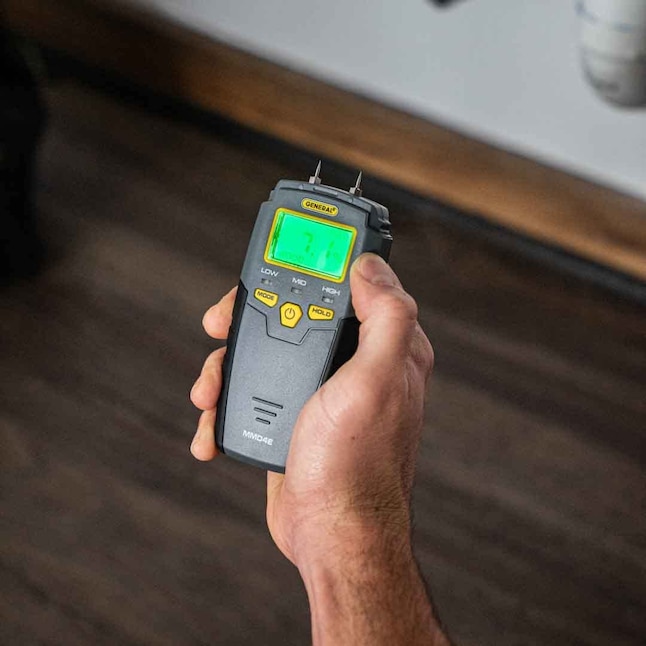How to Make Use Of a Moisture Meter to Find Concealed Water Damage in Your Building
How to Make Use Of a Moisture Meter to Find Concealed Water Damage in Your Building
Blog Article
Delve Into the World of Moisture Meters: Every Little Thing You Required to Know
In the world of dampness meters exists a world of accuracy and functionality that often goes undetected. Recognizing how moisture meters run, the different kinds available, and their diverse uses can shed light on their value in making sure top quality and effectiveness.
Just How Moisture Meters Work
Moisture meters operate by measuring the electric conductivity or capacitance of products to identify the dampness material existing. These meters are important tools throughout various sectors, consisting of agriculture, building and construction, and woodworking. By using various techniques such as pin-type or pinless modern technology, dampness meters supply accurate analyses that help professionals make educated choices.
Pin-type dampness meters work by putting the sharp pins into the material being examined. On the various other hand, pinless dampness meters use electromagnetic signals to check a bigger area without causing any damages to the product's surface area.
Regardless of the approach made use of, moisture meters play a crucial function in preventing concerns such as mold growth, structural damage, or product issues brought on by excess dampness. Understanding exactly how these meters job is necessary for making sure the top quality and stability of materials in different applications.
Kinds Of Moisture Meters
Given the critical function moisture meters play in different markets, it is vital to understand the different kinds available to experts for properly assessing dampness levels - Moisture Meter. There are primarily two major kinds of moisture meters: pin-type and pinless dampness meters

On the other hand, pinless dampness meters utilize electromagnetic sensing unit plates to scan a larger location of the product without causing any damage. This type appropriates for swiftly scanning huge locations and is typically utilized for floor covering, walls, and ceilings. Pinless meters are practical for taking analyses on completed surfaces without leaving any type of visible marks.
Both sorts of dampness meters have their benefits and are picked based on the particular requirements of the task at hand. Recognizing the differences in between these kinds is essential for professionals to make accurate dampness assessments.
Applications Throughout Industries
Building specialists rely on wetness meters to assess the wetness levels in structure products like drywall, timber, and concrete, which is crucial for preserving architectural honesty and preventing concerns like rot or mold. The floor covering sector makes use of wetness meters to gauge the dampness web content in subfloors prior to setting up various floor coverings, stopping pricey problems due to excess dampness. In the food industry, wetness meters are made use of to keep an eye on and control moisture levels in items such as grains, nuts, and dried fruits to preserve quality and top quality.
Tips for Making Use Of Wetness Meters
Make use of the go to my blog dampness meter's calibration setups to make certain accurate readings when measuring the moisture web content in various materials. Furthermore, make sure the meter is established to the right dampness array for the material you are determining to get the most precise results.
When using a pin-type wetness meter, place the pins to the ideal deepness recommended for the material being evaluated. This makes sure that the dampness analyses are extracted from the proper deepness within the material, More Help giving an extra accurate depiction of its moisture material. For pinless moisture meters, remember to keep appropriate contact with the material's surface area to get trusted readings.
Frequently check and replace the batteries in your moisture meter to stop inaccurate analyses due to reduced power. Shop the meter in a safe and dry place when not being used to lengthen its life-span and maintain its precision. By adhering to these tips, you can optimize the efficiency of your dampness meter and acquire specific wetness web content dimensions across different materials.
Upkeep and Calibration
To guarantee the precision of dampness material dimensions, normal upkeep and calibration of the wetness meter are necessary actions in its proper functioning. Maintenance involves keeping the dampness meter totally free and tidy from debris that might impact its analyses. It is very important to adhere to the producer's standards for cleaning to avoid damages to the device. Furthermore, routine calibration is needed to verify the accuracy of the readings. Calibration adjusts the dampness meter to ensure that it offers regular and dependable results.
Calibration must be performed regularly, specifically if the wetness meter is utilized regularly or in crucial applications where accurate measurements are required. By preserving and adjusting the dampness meter routinely, customers can trust the precision of the moisture web content measurements gotten.
Verdict

Finally, moisture meters play a crucial duty in numerous industries by precisely determining the moisture material of materials. Recognizing just how these gadgets function, the different types available, and proper maintenance and calibration are essential for getting trustworthy outcomes. Whether in farming, production, or construction, making use of wetness meters helps make a knockout post certain quality control and performance in procedures.

In verdict, moisture meters play an essential duty in numerous sectors by properly determining the dampness content of products.
Report this page